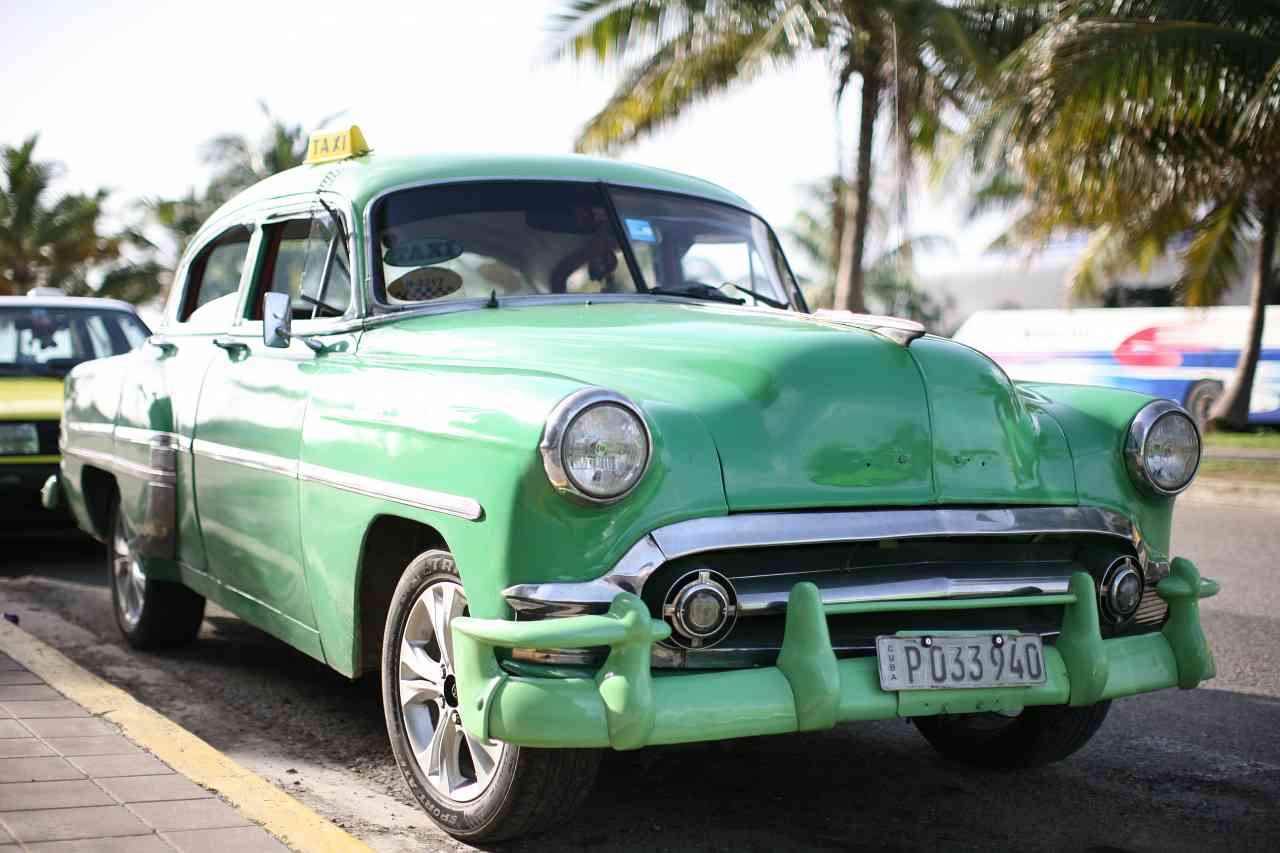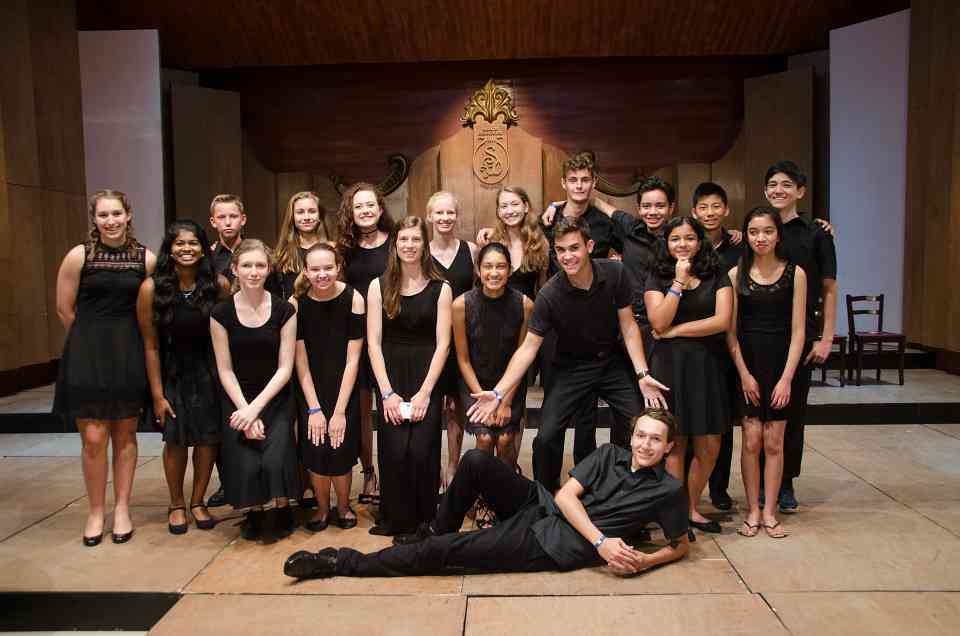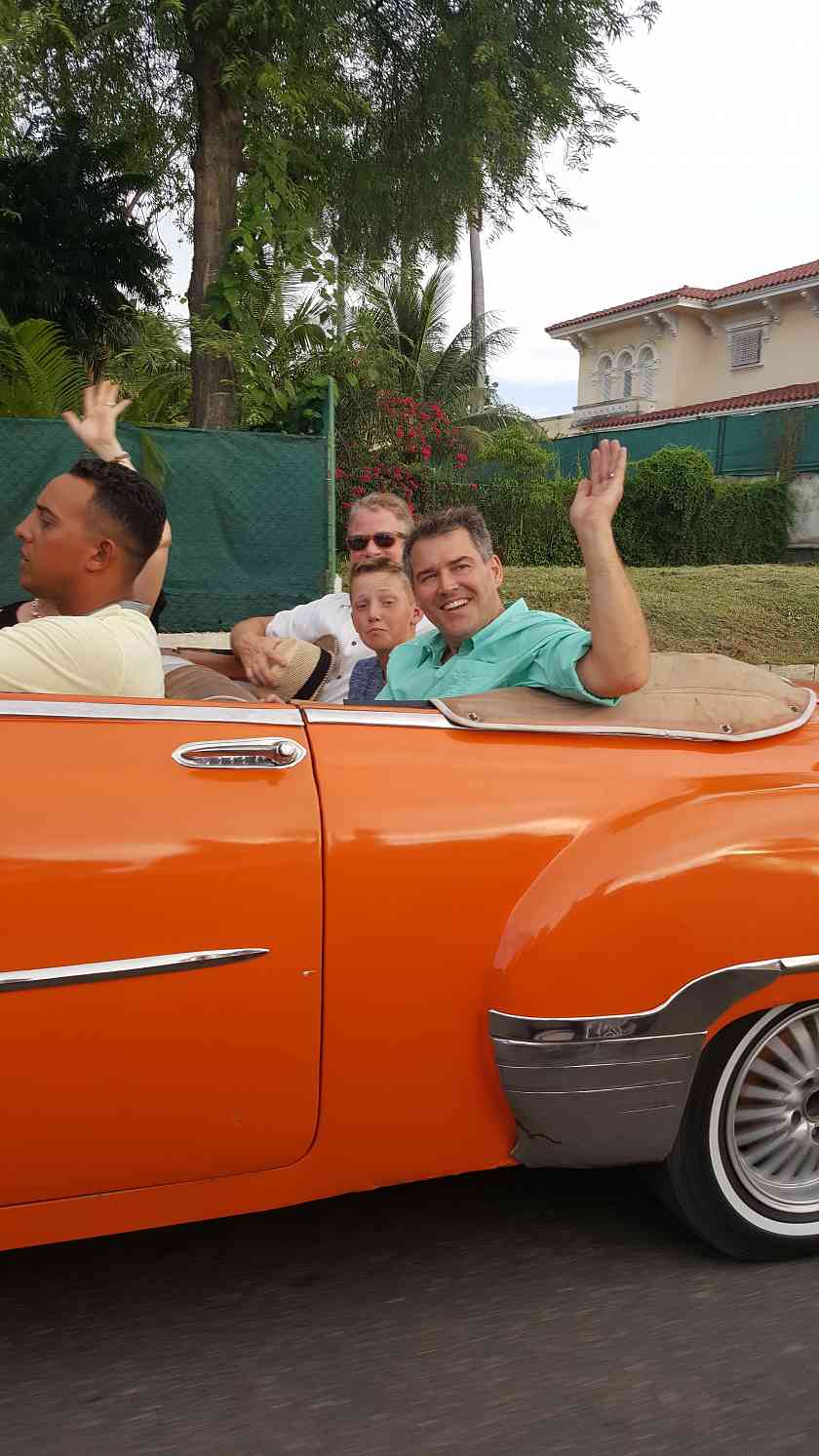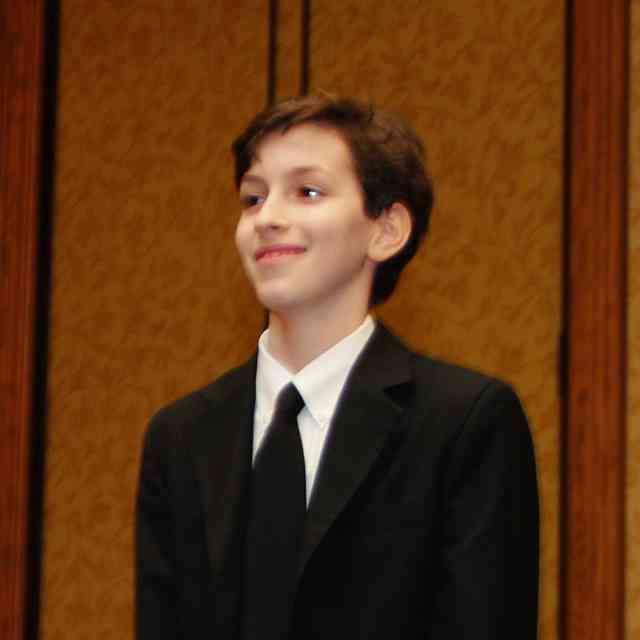
Havana Taxi
When President Obama opened the doors to Cuba in December of 2014, Chicago Consort Music Director Thomas Wermuth and I immediately started making plans to bring the Chicago Consort there for a cultural and musical exchange concert tour.
The Chicago Consort has a long history of international tours including to Canada, Europe, China and South America. For many years, we have partnered with our tour Consultants, ACFEA, and the Cuba trip would be no exception.
The first step was to contact our tour coordinators, Sylvia Garcia and Emily Frye Henrickson, and request a tour proposal from them. Sylvia, who is the concert coordinator for all South American ACFEA tours, has extensive experience in taking groups from other countries to Cuba. She immediately started making arrangements for us through her numerous contacts in Cuba.
Going to Cuba was not like any other tour. Typically, when the Chicago Consort tours, we travel as tourists and play concerts in churches, public and private concert halls, and are often included in ongoing music festival or concert series programs. In Cuba, we would be invited by the Ministry of Culture (as one of the first American musical groups invited into the country) and we would require a special visa to be able to present public performances. Each of our concerts was a shared event which was opened by the local professional orchestra of the town we were in.
The tour began on June 21 at 4:00 a.m. for our flight through Atlanta, GA, en route to Havana. Upon arriving in Havana, we had no problems with immigration services or customs, but our large baggage, keyboard, amplifier, and speakers did not come off of the luggage ramp. At the airport, we struggled for two hours to find out whether our equipment had made it. Finally, with the help of one of our fluent Spanish-speaking fathers, we were told that the equipment was “just past that door,” but that the man who needed to “okay” it being moved was on lunch break. Welcome to life on tour!
Finally, with all of our people, instruments, and luggage, we made our way to our first hotel. The Hotel H10 Panorama was a beautiful modern building with about 20 floors and a wonderful atrium lobby. As our group of 55—20 student performers and 35 adult chaperones, siblings, and directors—arrived at the hotel, we were greeted with a mojito (the most popular drink in Cuba) and learned that only one of the hotel’s three elevators was working that day. Welcome to life on tour!
Once settled, we departed for a group dinner at El Aljibe restaurant which specializes in roasted chicken with a spicy sauce and served with rice and beans. After the long day of traveling, it was wonderful to gather our group together for a delicious meal on the outdoor patio in perfect weather.
The next day we had a guided tour of Havana in the morning where we made stops at the Plaza de la Revolución and enjoyed a group lunch at a restaurant in the Old Town section of Havana. When we arrived at the restaurant, all the tables were set, we were welcomed with a mojito, and we were pleasantly surprised to find that lunch was a grilled lobster tail served with vegetables. Welcome to life on tour!

Consort at Basilica
In the evening, we played our first concert of the tour. This concert took place in the Basilica de San Francisco de Asis in Havana. This concert was shared with the acclaimed Ensamble Solistas de la Habana under the direction of Iván Valiante. This is a remarkable young group of string players who perform as a small chamber orchestra and also in various combinations of chamber music groups. Performers may only be between the ages of 18 and 22 and the orchestra serves as a training orchestra from which musicians are then sent to permanent positions in other orchestras around the country. This was an impressive group. Their performance of The Dvorak Serenade for string orchestra was spectacular and belied the poor quality of instruments and strings that the performers were using. Cubans love classical music, and we were thrilled to play to an entirely packed Basilica. The audience was knowledgeable and attentive and enthusiastic in their generous applause at the end of the program.
The next day we had another spectacular breakfast at the hotel and then headed to Varadero by coach. Varadero, covering Cuba’s narrow Hicacos Peninsula, is a popular beach resort town which is typically off limits to Americans, as it is only a place to go for a resort vacation. ACFEA managed to book us at the Hotel Playa de Oro, which was right on the beach. This was not just a beach, but the most beautiful, pristine white powder sandy beach I have ever seen. We were able to stay at the resort, because it was the closest hotel (which could hold a group our size) to the town of Matanzas, where our next concert was booked. It was very interesting to notice that we were the only Americans staying there. Welcome to life on tour!
The next day, we made the long coach ride to Matanzas to perform in the newly refurbished Sala José White, a beautiful boutique concert venue dedicated to the famous Cuban composer José White, who was originally from this town.
When we were making our preparations for the tour, we were told that there would be no usable pianos in Cuba and that it would be necessary for us to carry with us a keyboard, amplifier, and speakers. This was disappointing news, but we understood that this was just one of the challenges of performing in a country like Cuba. Imagine our surprise when we arrived at Sala José White to discover a nine-foot German made Steinway Concert Grand Piano. Welcome to life on tour!
This concert was perhaps the most special to me. The hall, which seated maybe 150 people, was filled with at least twice that number. The residents of the town waited in line for an hour outside in the heat, and after every seat was taken, they filled the aisles and stood in the back of the hall. Pressed skin to skin, they didn’t budge during the entire two-hour program. The program was opened by the Matanzas Symphony Orchestra performing Symphony No. 40 by Mozart, and we enjoyed hearing a modern string orchestra arrangement of the José White “La Bella Cubana,” which we were also performing that day in its original form for two violins and piano.
Our third stop on the tour was in the small town of Santa Clara where we stayed at another beautiful resort hotel. One of the highlights of the trip was when our students and parents participated in the fashion show around the pool at the hotel. The concert hall in Santa Clara was the Teatro de La Caridad (Spanish for “Charity’s Theatre”). It was built in 1885 and is one of the Eight Grand Theaters of the Cuban Colonial era. The theater was financed entirely by Marta Abreu de Estevez, a local and beloved philanthropist who contributed to the prosperity of the city. The theatre, which seats more than 500, was filled with enthusiastic Cubans from the region. The concert opened with the Villa Clara Symphony Orchestra.
Here in this provincial town, there was so much excitement about the concert, and much was generated by the music director of the a capella choir in town. When I inquired about why the choir was a capella, he explained that there was no piano, keyboard, or accompanying instrument in the town. Welcome to life on tour!
As we were packing our equipment and getting ready to load the bus, we decided that we would leave behind our electronic keyboard, amplifier and speakers so that residents and musicians of Santa Clara could enjoy having a keyboard in their town.
On our way back to the US, we made another stop in Havana and had the opportunity to do a workshop together with some of the members of the Ensamble Solistas and their conductor, Iván Valiante. Maestro Valiante first worked with our group on the “La Bella Cubana,” helping us better understand the importance of just the right tempo for each section of the piece and how that tempo serves the dance of the music. Then we got to sight read some traditional Cuban pieces, and Maestro Valiante made a gift of the score to Mr. Wermuth and me so that we can incorporate this Cuban music in our repertoire. It is a requirement of all Chicago Consort members to carry a spare set of strings in their case on tour. We quickly gathered all of the spare strings and made a gift to Maestro Valiante to give to the string players in his group.

Farewell Dinner
On the final evening of our tour in Havana, our tour director, Sylvia Garcia, met everyone in the lobby of the hotel to explain that there was a complication with the bus and that we were going to have to take “alternate” transportation to the farewell dinner. As we departed the hotel, we saw 14 antique cars with their drivers lined up and waiting to take us to dinner. It was a beautiful night and we made a caravan all through the city, along the waterfront, and finally to our restaurant. It was an experience none of us will ever forget.
Throughout the tour, we learned many things about the culture, government, political environment, educational system, and daily life of Cubans from our amazing tour guide, Manual Alejandro Pozo Calo, or “Manny” for short. HIs incredible welcoming presence made each member of our group feel at home in Cuba and that we could ask any questions to try to understand our neighbors to the south. He emphasized many, many times how devastating the embargo against Cuba from the US is and how the people of Cuba are not interested in having poor relationship with the United States. We all left there feeling like we had made many new friends and understood a little better about life in Cuba. I think we all left with a sad heart, and we hope to be able to return again soon.






